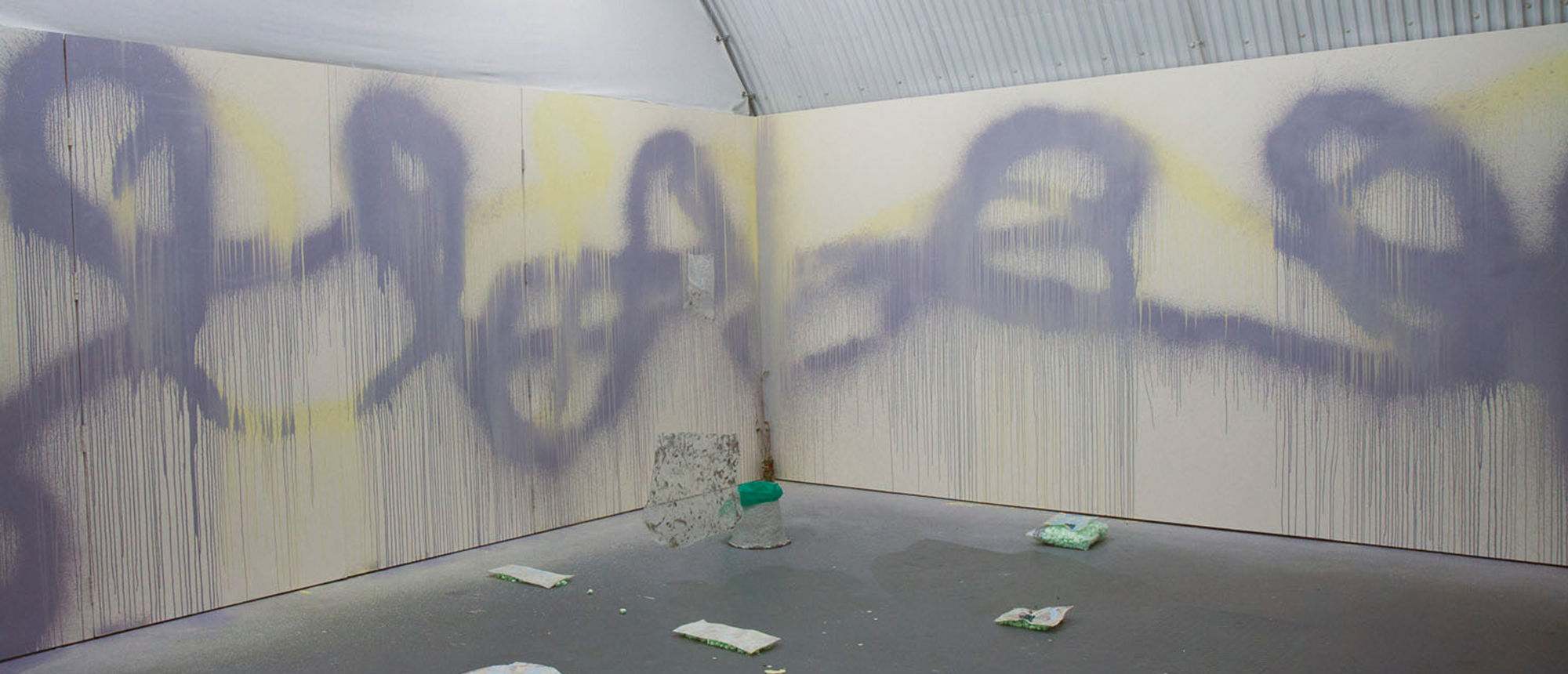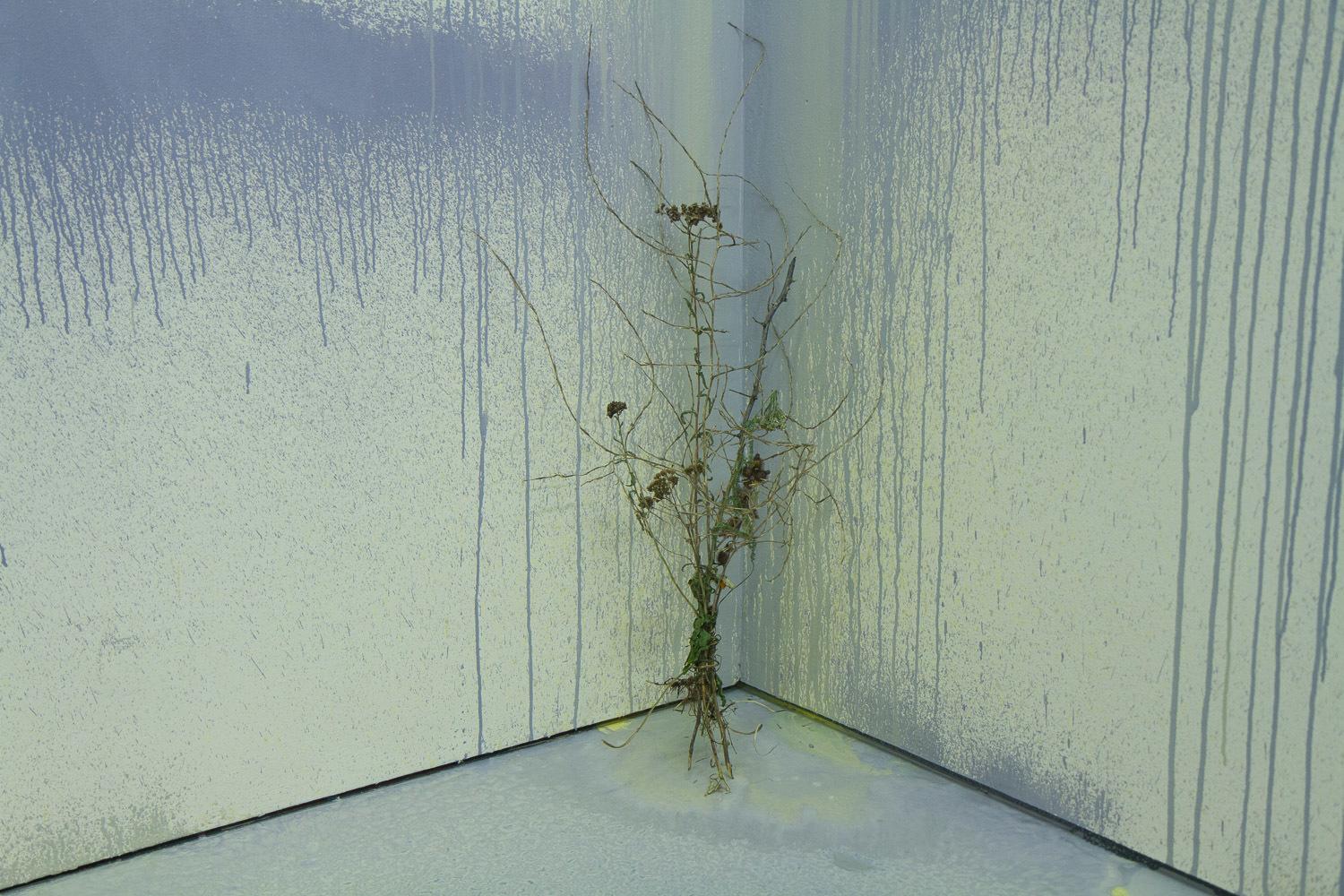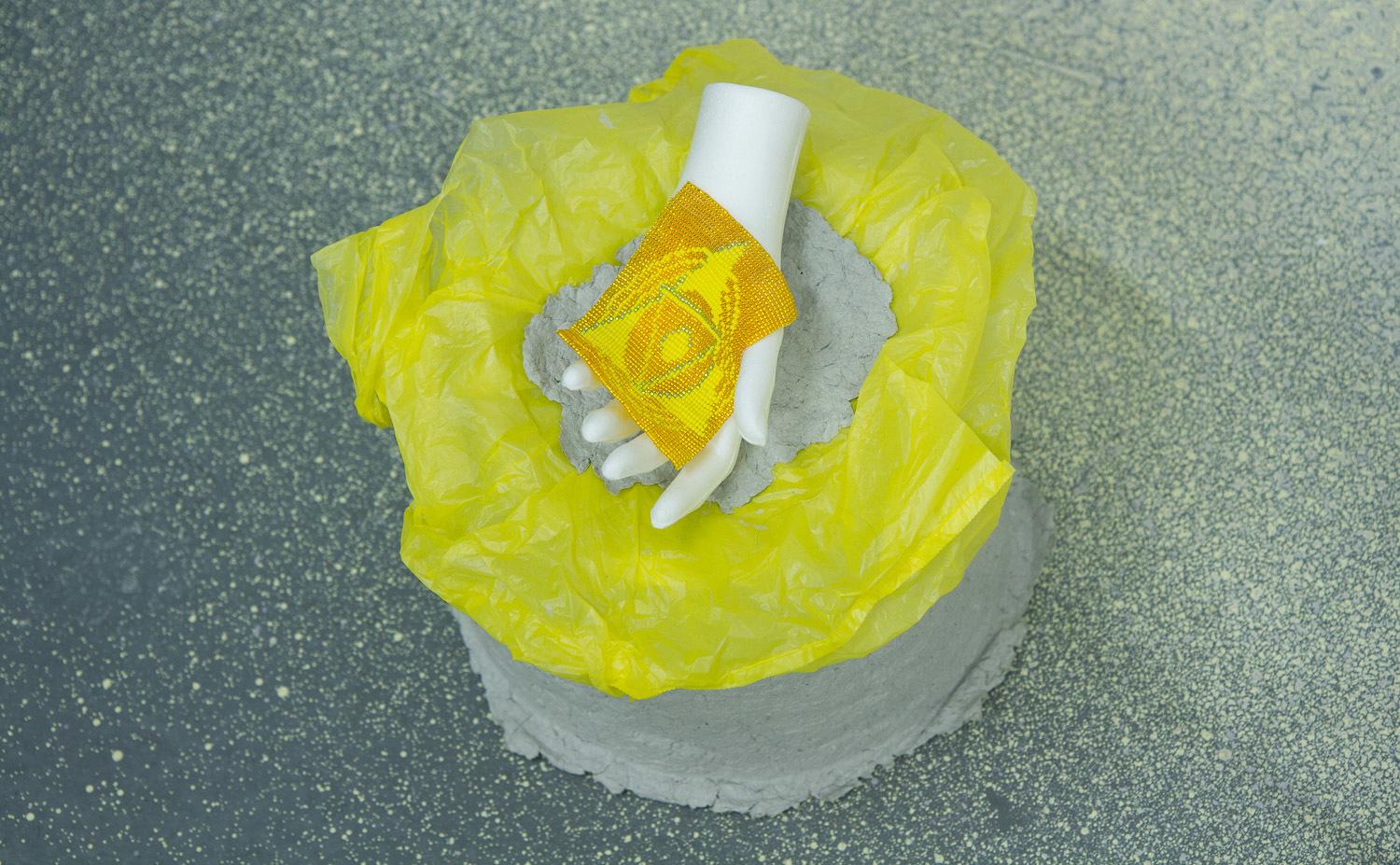
To enter Beatrice Loft Schulz’s “Living Arrangement #” meant passing through a ten-foot-wide, New Agey, patterned curtain of glass beads laboriously threaded by the artist. In advance of the exhibition’s opening, Arcadia Missa director Rosza Farkas told me, Schulz and her assistant, Ruby Read, performed a magic spell to harness the earth’s energy for the gallery. Evidence of this ritual remained in the wiry stick bundles propped in the rear two corners of the space—charms signposting the invisible forces encircling this total environment. Schulz’s work characterizes a thread of contemporary feminist art practice in London: pastel-colored leakages and stains pooled around discourses of the body, domesticity, craft, and pre-Enlightenment world views. The witch’s proto-feminism has recently been reappraised in exhibitions such as Anna Colin’s “L’Heure des sorcières” at Le Quartier, contemporary art centre of Quimper, France, or Deanna Petherbridge’s “Witches and Wicked Bodies” at the British Museum, flouting the idea that an interest in astrology and other occult belief systems, as Theodor Adorno claimed in his 1952 essay “The Stars Down To Earth,” is necessarily regressive.

“Born in the year of the tiger,” according to the obfuscatory gallery press release, Schulz “lives and works in the year of the goat.” Read against the Chinese Zodiac, the Sheng Xiao, the statement reveals more than one might initially expect: Schulz is both artist and writer, making objects, paintings and performances while penning screenplays and contributing to The New Inquiry, an influential web-based magazine of critical writing on art and culture. In “Living Arrangement #,” objects and images were set against a medley of illegible cool gray and cream scrawl across the gallery’s beige-colored walls. Schulz’s palette follows the remembered interior design advice of cosmopolitan commuter rag London Evening Standard: “Delete magnolia from your vocabulary. Magnolia and white is out. What you need is light warm grey and beige.” Relinquishing aesthetic judgment, she channels, like Marc Camille Chamowicz in his The World of Interiors book (2006), the dictates of the tastemakers of domestic bourgeois living arrangements.
In the ejaculatory splurges of the decoratively colored marks, applied using household paint sprayed from a fire extinguisher, one couldn’t quite discern the words JUST THRILL, a phrase borrowed from graffiti observed by the artist in a Berlin gas station. It was hard not to see these trembling figures as satirizing Abstract Expressionism’s cocksure vitalism—alive, or at least just there, in today’s so-called zombie formalism. But in tension with this expressive mark-making was a prevalence of woven grids: the dozen or so assemblages of handcrafted and mass-produced materials—marbled and handmade paper, found plastic bags and packing materials—arrayed schematically on the floor, small paper lattices hanging overhead, and the beaded curtain at the gallery threshold. Alongside the archetype of the witch, a more specific historical heroine looms behind “Living Arrangement #”: Ada Lovelace. Known for her improvements of Charles Babbage’s Analytic Engine, an early device for computing arithmetical tables, Lovelace is considered to be the first computer programmer. The Analytic Engine, Lovelace wrote, “weaves algebraic patterns just as the Jacquard loom weaves flowers and leaves.”

Schulz self-consciously uses weaving to unpick a feminist pre-history of the Internet. Each of the curtain’s 26,000 glass beads were threaded according to a complex procedure, resembling weaving’s warp and weft, to create a large criss-cross pattern. Sadie Plant, in her innovative book Zeroes + Ones (1997) claims that contemporary media don’t begin with writing, but with weaving, “a gathering of threads which twist and turn through the history of computing, technology, the sciences and arts” and lead to “synthetic fibers, fiber-optic cables, pixeled screens, the World Wide Web, the Net, and matrices to come.” Following this list of analogies, it’s easy to understand the curtain as an algorithm writ large, a proxy materialization of the net that touches us all. Perhaps, along with Schulz’s suspended lattices, it is a kind of giant dream catcher? And yet entangled in Schulz’s mytho-poetics and benign domesticity are hints of a kind of hints of a kind of violence: Nets don’t merely touch, after all. They also ensnare.
